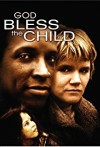In “God Bless the Child,” everyone is seen as God’s child, deserving of help and sympathy. Between mother Theresa (Mare Winningham) and daughter Hillary (Grace Johnston), Hillary is not merely the child. They are both in need of a blessing after Theresa finds herself jobless and homeless. The film paints a stark, painful portrait of hard luck during harder times, and the vision remains fresh and relevant to the 21st century ear (the film was originally released in 1988). It seeks empathy for its characters, challenging audiences to be in another’s less-comfortable shoes.
The story intersects with another family during hard times, and together they finalize the film’s point: that finding sympathy with each other is sometimes the best solution to life’s issues. With two stories to juggle, it is a surprisingly still film; it portrays patience with its characters and their time together. This is not a plot-driven film. It is a slice of life—an unfortunate way of life—that not everyone can know. The second family, however, does not seem to get the same amount of attention or resolve, making the film’s body somewhat uneven at times. In fact, the film loses sight towards the end, finishing on a note of heartbreak that does not necessarily uphold the ideals of support and community as developed previously. It isolates the audience, but perhaps further challenges them. “God Bless the Child” is effective with some powerful messages on its side. The content is not recommended for young children but should still be viewed by a more mature audience. The film is cautious and thought-provoking with its presentation, but do not expect a happy, hopeful film.
Subscribe Lorem Ipsum





